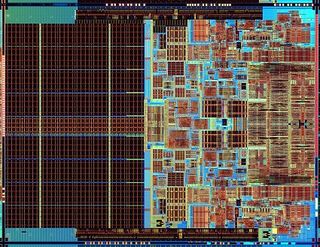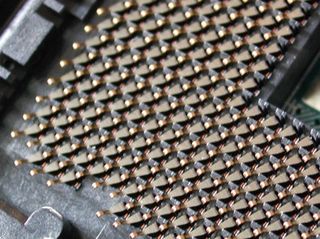Tom's Hardware's 2007 CPU Charts
Intel: Core 2 Rules The Processor Arena

As already mentioned, Core 2 clearly is the performance winner at the moment, and although Intel adjusted its pricing as a reaction to AMD's aggressive price cuts, a Core 2 Duo processor typically is slightly more expensive than an Athlon 64 X2. If you look at the higher-end models E6700 and up, there is no AMD competition anymore, but Intel has upgraded its processor portfolio to push away AMD not only from the high end, but also from the mainstream and the low end.
There are Core 2 based processors to fit every wallet and every market segment. This also includes new Celeron D processors, which are single core models. All of them share a basic platform and utilize Socket LGA775. Thanks to the power requirements of 75 W (Extreme Edition), 65 W (mainstream Core 2 processors) or only 35 W (Celeron D 400 series), almost all Socket 775 motherboards should be capable of running a Core 2 based processor, as long as they are based on a chipset no older than one year. Early 975X motherboards cannot support Core 2 due to missing voltage regulator support, but most motherboards based on the P965, P35 and G33 chipsets normally can, as well as boards based on Nvidia's nForce 6 series.
It is possible to purchase a mainstream motherboard and a low-cost Core 2 processor today, and then upgrade it with a Core 2 Quad processor as these become affordable. While an AMD Phenom X4 will run at its default clock speed even in non-AM2+ motherboards, the Core 2 Quad is limited to a motherboard's Front Side Bus speed. If you want to be sure that your platform will support Core 2 Quad or future 45 nm processors, we recommend looking at the latest generation of P35 or G33 motherboards, or even the upcoming enthusiast chipset X38. We'll talk more about platforms and memory choices later.

Click to enlarge core2_die_big.jpg


Stay on the Cutting Edge
Join the experts who read Tom's Hardware for the inside track on enthusiast PC tech news — and have for over 25 years. We'll send breaking news and in-depth reviews of CPUs, GPUs, AI, maker hardware and more straight to your inbox.
Current page: Intel: Core 2 Rules The Processor Arena
Prev Page AMD: Waiting For The Phenom Next Page E6000 Series NomenclatureMost Popular

